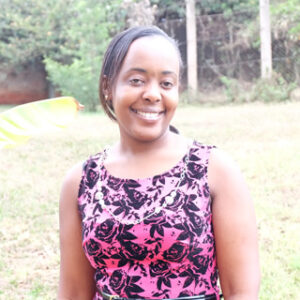- by AATF Africa
I come from Itando village in Chavakali division of Vihiga district in Western Kenya. I have been a farmer since 2003. I practice what you would call intensive farming. I grow a mixture of crops like avocado, sweet potatoes, various types of vegetable, beans and I also rear chicken, goats and cows.
Land sizes in Vihiga are small and so if you want to make the best out of the land one needs to use various technologies to improve yields. I am an advocate of the use of improved technologies in farming in this area.
This area is heavily infested by a weed known as Striga or Oluyongo in Luhya our local language. The weed normally attacks maize, and if you have it on your farm you will be lucky to harvest anything. Before a new maize variety known as StrigAway or Ua Kayongo locally was introduced to me I used to plant maize without success. This was very frustrating for me. This is because for us in this area just like in the whole of Kenya maize is the main food. I had a farm full of beautiful pink flowers but I didn’t know that it was Striga and that it was the source of poor maize yields on my farm. We actually thought our land had been cursed by someone. I thought my father disliked me and had given me this piece of land as my inheritance.
In 2005 my fortunes in maize farming started to change. An organisation known as the Forum for Organic Resource Management and Agricultural Technology (FORMAT) introduced the StrigAway Imazapyr Resistant maize (IR) technology to people in this area. They educated us that the flowers we had on our farms were dangerous weeds. They gave me a quarter kilogramme of IR maize to try and I saw a significant increase in maize yields and also in the reduction of the Striga weed on my farm. After two seasons of planting IR maize, my farm was almost rid of Striga with only a few weeds coming up here and there.
IR maize comes with unique planting instructions which at first confused me. Aspects like not planting it together with other seeds or touching other seed before washing hands did not make sense. Through training from Format I got to understand and I adopted the correct planting requirements.
Some of my neighbours have still not adopted IR maize. Some are not able to buy the seed and so continue to recycle previous seed, which does not reduce Striga. Others have abandoned their farms thinking that they are cursed. These are the same ones who accuse me of using witchcraft on my farm when they see no Striga on my farm. I normally rotate IR maize with other maize varieties every season. But I make sure that I plant IR varieties next to those neighbours who have the weed on their farms so that it does not affect my farm. I also test whether Striga has been depleted from my farm by planting other maize hybrid varieties. At the moment I have planted IR maize on half an acre and I expect to harvest about eight bags of maize.
I can say in this area IR maize is the only variety that can guarantee one’s family food security since this is a Strigainfested area. It feeds my family of six children plus my wife and I. The IR maize is sweet when roasted and boiled and the milled flour is heavy when compared to other maize varieties. So apart from controlling Striga, IR has other advantages. The maize also dry’s fast and does not lodge when it is windy. In this area it rains consistently and since IR maize matures in three and a half months one can actually plant thrice a year.
I purchase the IR maize seed from our farmer group known as Mwangaza. This year we bought 300 kilogrammes of IR maize seed and next season we want to increase the amount to 500 kilogrammes. Mwangaza Farmer Group is an umbrella organization that has 18 groups with 700 members. Out of this about 300 members plant IR maize.






















































































